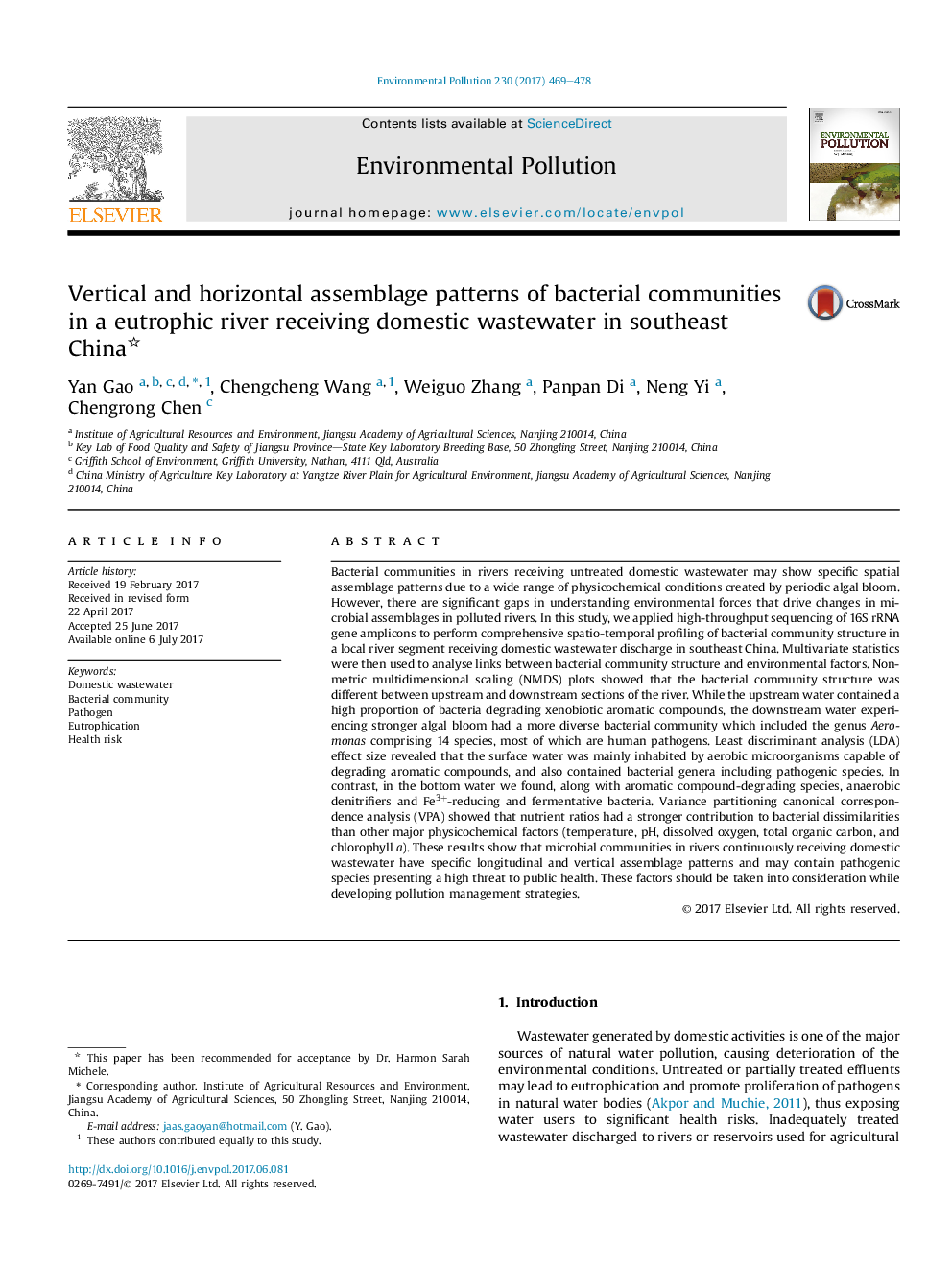| کد مقاله | کد نشریه | سال انتشار | مقاله انگلیسی | نسخه تمام متن |
|---|---|---|---|---|
| 5748693 | 1619143 | 2017 | 10 صفحه PDF | دانلود رایگان |

- Severe algal bloom in downstream allow proliferation of more diverse pathogens.
- Wastewater input in upstream allow proliferation of xenobiotic aromatic compounds degrading bacteria.
- Surface water featured bacterial families containing pathogens and aromatic compounds degrading bacteria.
- Bottom water featured bacterial families containing denitrifiers and fermentative bacteria.
- Nutrient ratios have a stronger contribution to bacterial dissimilarities than other variables.
Bacterial communities in rivers receiving untreated domestic wastewater may show specific spatial assemblage patterns due to a wide range of physicochemical conditions created by periodic algal bloom. However, there are significant gaps in understanding environmental forces that drive changes in microbial assemblages in polluted rivers. In this study, we applied high-throughput sequencing of 16S rRNA gene amplicons to perform comprehensive spatio-temporal profiling of bacterial community structure in a local river segment receiving domestic wastewater discharge in southeast China. Multivariate statistics were then used to analyse links between bacterial community structure and environmental factors. Non-metric multidimensional scaling (NMDS) plots showed that the bacterial community structure was different between upstream and downstream sections of the river. While the upstream water contained a high proportion of bacteria degrading xenobiotic aromatic compounds, the downstream water experiencing stronger algal bloom had a more diverse bacterial community which included the genus Aeromonas comprising 14 species, most of which are human pathogens. Least discriminant analysis (LDA) effect size revealed that the surface water was mainly inhabited by aerobic microorganisms capable of degrading aromatic compounds, and also contained bacterial genera including pathogenic species. In contrast, in the bottom water we found, along with aromatic compound-degrading species, anaerobic denitrifiers and Fe3+-reducing and fermentative bacteria. Variance partitioning canonical correspondence analysis (VPA) showed that nutrient ratios had a stronger contribution to bacterial dissimilarities than other major physicochemical factors (temperature, pH, dissolved oxygen, total organic carbon, and chlorophyll a). These results show that microbial communities in rivers continuously receiving domestic wastewater have specific longitudinal and vertical assemblage patterns and may contain pathogenic species presenting a high threat to public health. These factors should be taken into consideration while developing pollution management strategies.
447
Journal: Environmental Pollution - Volume 230, November 2017, Pages 469-478